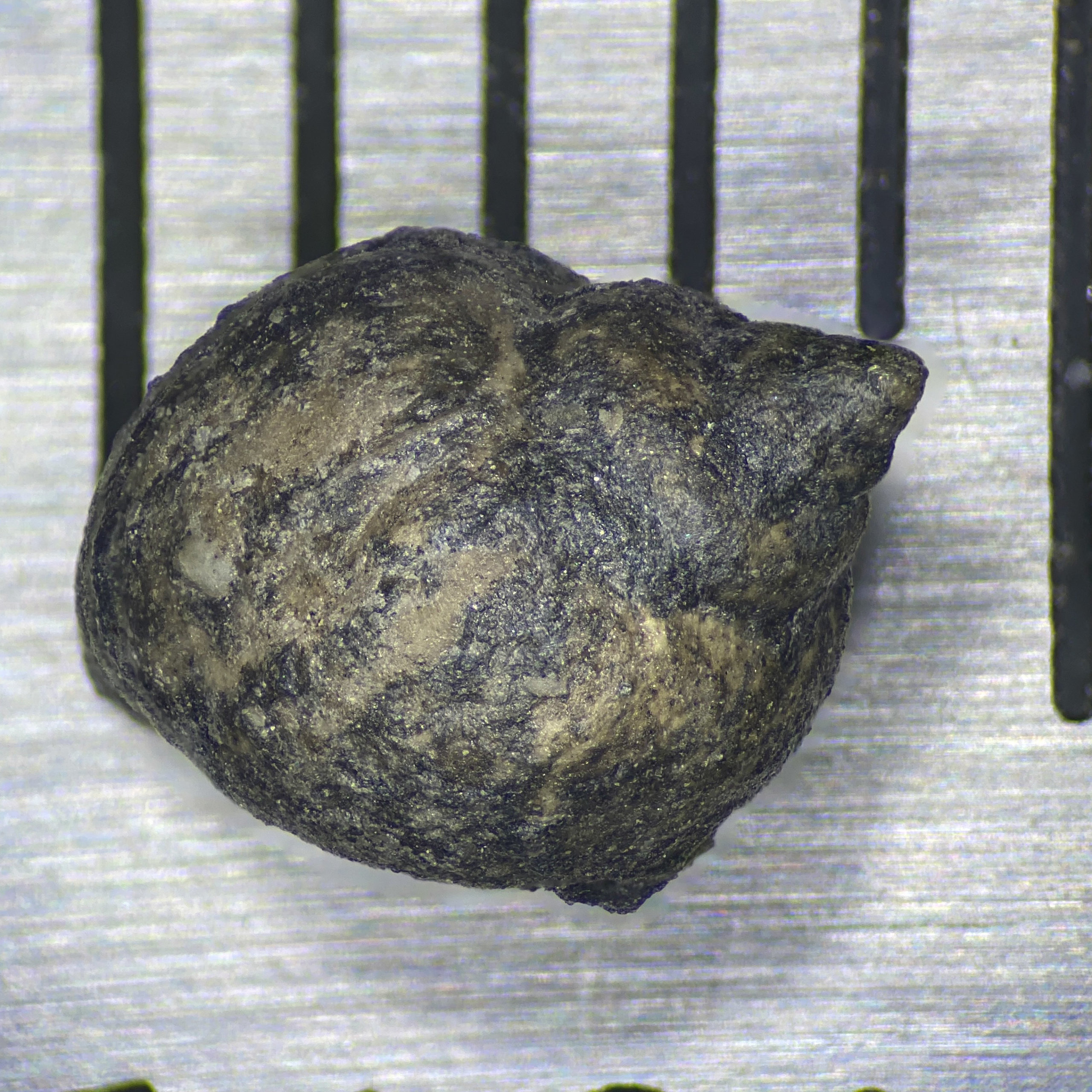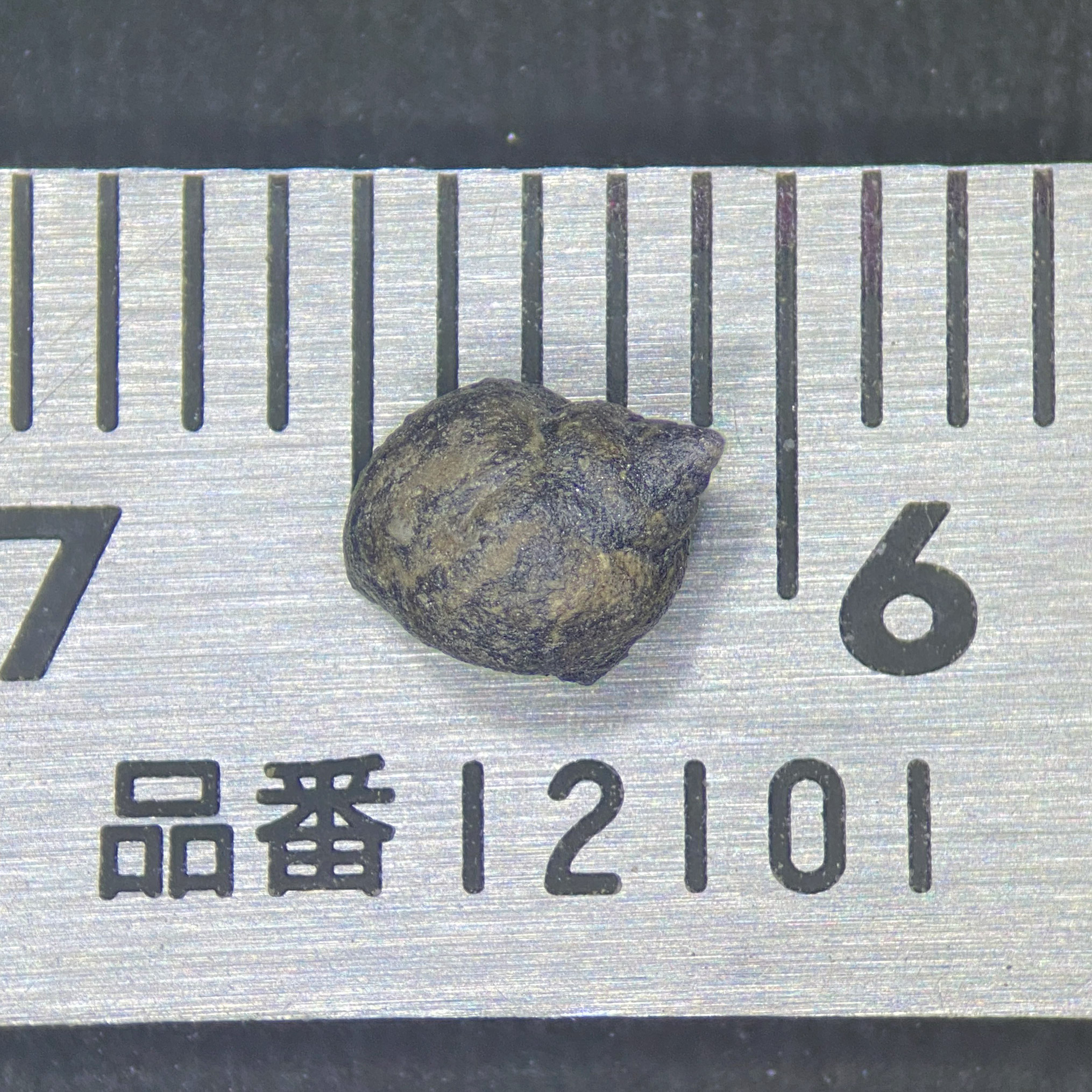Strobeus brevis
336.0 to 252.3 MYA
Scientific Classification
Kingdom:
Animalia
Phylum:
Mollusca
Class:
Gastropoda
Order:
Murchisoniina
Family:
Soleniscidae
Genus:
Strobeus
Species:
brevis
White 1881
UPDATE: This is not Strobeus, but Leptoptygma. Cleaning out the aperture makes this clear. April 2023.
Catalog Number: CG-0155
This tiny late Paleozoic gastropod is most likely identified as Strobeus brevis. Measuring somewhere between four and five millimeters, this snail would be challenging to spot if you were not looking for it. This makes identifying it slightly more complicated, with small morphology to compare. However, its spire does have a very sharp appearance to the naked eye, which is surprising as structures this tiny do not always survive. The species has a very long temporal age range, found in rocks from 336 to 252.3 million years of age. But most local species didn’t last forever. It was yet another victim of the Permian-Jurassic extinction event that ended the runs of several genera and species found in local late Pennsylvanian rocks.
C. A. White illustrated this as Soleniscus brevis (Figure 5b, plate 5b) in a USGS report, “Report on the Carboniferous invertebrate fossils of New Mexico.” White describes S. brevis as being short-spired. The spire is less than one-third of the entire shell length. The shell was subglobose and had six or seven volutions (whorls). The shell of his specimens had a test (shell) of medium thickness. Specimen CG-0155 has an aperture edge that shows a shell of medium thickness. Also, the shell is supposed to have a smooth surface.
At one point, the name Strobeus was synonymized with Ianthinopsis by Knight in 1960. However, in 1978, Harper proved that any usage of Ianthinopsis other than for the holotype was incorrect due to a lack of a physical holotype and good illustration.
Strobeus brevis Photos
Photographing specimens this small requires the use of a microscope and focus-stacking. First, you must take several photos at different planes of focus. Then, using image editing software, these are loaded as a stack of layers. Next, each picture is aligned, each positioned on top of the other in layers. The final step is to have the software focus blend the image, keeping all the sharp areas in each layer. This produces the photos below.

References
- Girty, G.H., 1915, Fauna of the Wewoka Formation of Oklahoma, U.S. Geological Survey, Bul. 544. pp. 1-353
- Harper, J.A., 1981, The Use: And Misuse: Of Ianthinopsis Meek and Worthen, 1866 (Mollusca: Gastropoda), Journal of Paleontology, V. 55, No. 1, pp. 180-185
- Knight, J.B., Batten, R.L., Yochelson, E.L., 1960, Gastropoda. Part I. Mollusca 1, Treatise on Invertebrate Paleontology, University of Kansas Press, pp. I169-I331
- de Koninck, L.G., 1881. Faune du calcaire carbonifère de la Belgique, 3e partie, Gastéropodes. Musée Royale d’Historie Naturelle Belgique Annales, Série Paléontoloque 6:1-170
- White, C. A., 1881, Report on the Carboniferous invertebrate fossils of New Mexico, United States Geological Survey west 199th Meridian 3:1-38



